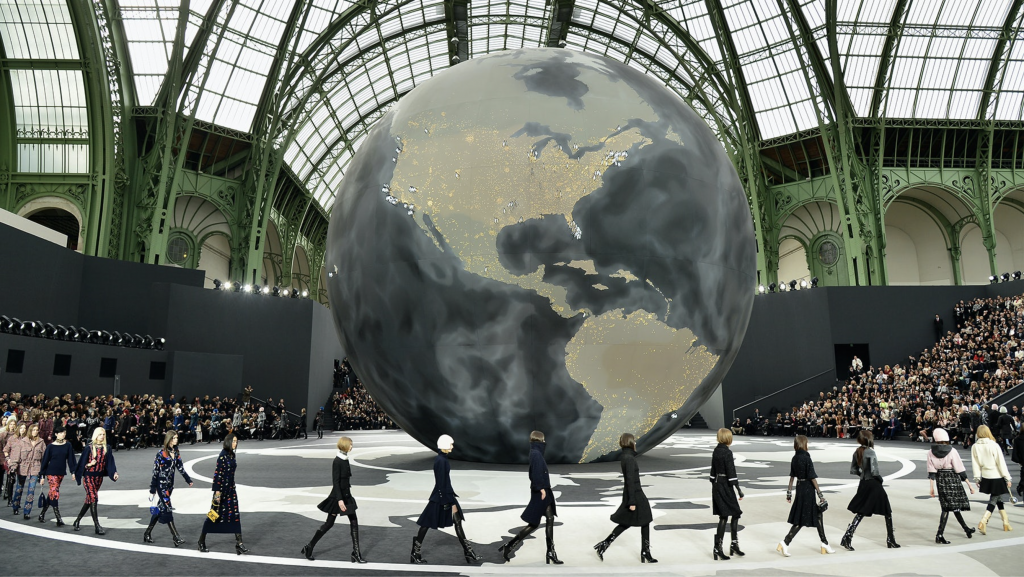Story MINH NHAT
Photos FASHION BRANDS WEBSITES
Consumers have shown that they have the power to help shape an eco-friendly future for fashion.

A complex reality
In the discourse on contemporary environmental issues, the fashion industry stands out as one of the most active sectors in the quest for sustainability. Despite 25 years of innovation efforts, however, a sad reality persists: fashion continues to impact the planet negatively.
Most products are still manufactured using non-biodegradable compounds and the lifecycle of fashion items remains largely unchanged, contributing to a mounting pile of textile waste.
According to a report by the Ellen MacArthur Foundation, the clothing industry consumes 98 million tons of non-renewable resources per year, while 87% of material used for clothing ends up in landfills or incinerators.
It is not hard to understand that in today’s convenience-driven marketplace, fashion struggles to align cost-effectiveness with environmental friendliness.
Brands may also find it challenging to create visually appealing designs on a large scale using raw and unprocessed materials, furthering the excessive exploitation of both the environment and industrial workers. In the 2000s and early 2010s, sustainability issues were less present in consumers’ minds, and this was a golden era for fast fashion retailers. Forever 21 expanded to 47 countries within six years of its establishment, while Shein offered rapid production timelines ranging from 5 to 7 days.
However, as society became increasingly concerned about climate change, sustainability became a focal point for both high-end and affordable brands. Consumers also began considering the welfare of garment workers and environmental impact in their purchasing decisions. Consequently, Forever 21 declared bankruptcy in September 2019, amidst boycotts, and other fast fashion companies are experiencing similar declines, with ASOS reporting an 87% profit decline. Shein faced public backlash after a Channel 4 investigation revealed labor law violations in China, prompting the e-commerce platform to announce new initiatives to improve its record.

Positive steps
Numerous reports and investigations indicate that European fashion houses are acutely aware that global consumers are becoming more informed about the complex issues in Asian factories. Therefore, some have begun using the “Made in Europe” label to maintain a positive image. Recent data from the Clean Clothes campaign, however, reveals that labor wages in the workshops of many luxury fashion houses still lag significantly behind legal minimums.
Still, as the environmental protection movement gains momentum, concerns about natural impact and human health are growing and many fashion houses are making substantial commitments to sustainability. GUCCI, Stella McCartney, and Vivienne Westwood incorporate large amounts of recycled materials, actively monitor greenhouse gas emissions and eliminate heavy chrome metals from leather tanning. Transparency indices for these brands reach up to 50%, according to the latest surveys. Other brands like CHANEL, Burberry and Louis Vuitton are not only adopting recycled materials but also exploring green transportation methods for global distribution, contributing to a significant shift in environmental preservation.
Positive initiatives are also evident in the emergence of local sustainable fashion brands. The creations focus on incorporating natural materials, investing in traditional craftsmanship and skillfully combining creative design methods with modern production to find a common language between past and future. Many brands have transcended the borders of their home countries to expand globally, such as Kowtow (New Zealand), KITX (Australia) and RUMI X (Hong Kong). In Vietnam, names like KILOMET109, Môi Điên and BOO are recognized domestically and internationally for their efforts towards sustainable values.

Consumers are key
Beyond the operational contexts and transformations of various brands, a key to sustainability also lies in the hands of consumers. The primary environmental concern is the excessive production and consumption driven by the fashion industry, and to minimize the flood of products, individual consumers must also change. When consumers collectively shift their perceptions about environmental protection and alter their shopping behavior, brands have been shown to adapt to the shifting realities.
Just as the community played a role in the downfall of Forever 21, genuine sustainability practices start with consumer habits. The fashion industry aims to achieve sustainability by reducing product consumption and extending the lifespan of each item. The goal is to cultivate a mindset of “durable fashion” despite the challenges, such as higher costs and less visually appealing designs. Buying fewer items of high quality and durability contributes positively to the sustainability effort. Hard choices face both consumers and brands, but an eco-friendly future is not impossible – especially since protecting the environment means safeguarding our future.










